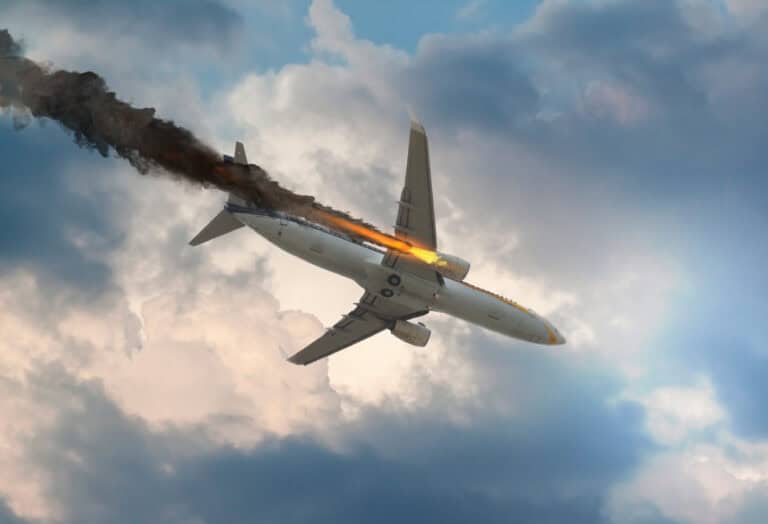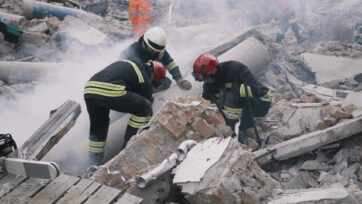Illustrative image – not the actual aircraft involved (Credit: solvod / Adobe Stock)
India’s Aircraft Accident Investigation Bureau (AAIB) has begun a comprehensive inquiry into the June 12 crash of Air India Flight 171, a London-bound Boeing 787 Dreamliner that went down shortly after takeoff from Ahmedabad. The tragedy, which killed 241 of the 242 people on board and several on the ground, is among the worst aviation accidents in India in recent decades.
One Survivor, Hundreds Dead
Of the 230 passengers and 12 crew members on board, only one person survived. Forty-year-old British citizen Vishwaskumar Ramesh, seated in 11A, managed to escape the burning wreckage with cuts and bruises. In interviews with Indian media, Ramesh described pushing open the emergency exit and walking away from the crash site, dazed and bloodied. His brother, seated a few rows away, did not survive.
The crash killed not only passengers and crew, but also people on the ground, including five medical students, a 15-year-old boy delivering lunch, and a grandmother with her young granddaughter. The aircraft struck a hostel and canteen near a hospital, where approximately 200 people were gathered.
What Happened During the Flight
Flight 171 lifted off from Sardar Vallabhbhai Patel International Airport in Ahmedabad at 13:39 local time on June 12. The pilots, Captain Sumeet Sabharwal and co-pilot Clive Kundar, issued a mayday call less than 40 seconds after takeoff. This was the last communication from the aircraft. It then lost altitude and crashed into a six-story building in a densely populated area, bursting into flames.
The aircraft was carrying nearly 100 tonnes of fuel. A large explosion followed the crash, and black smoke was visible across the city. CCTV footage showed the plane climbing to about 160 meters before it began descending nose-up.
The Investigation
Authorities recovered the cockpit voice recorder and flight data recorder from the crash site. These are expected to provide crucial information about what happened in the final moments of the flight. Indian officials are leading the investigation, with assistance from Boeing, GE (the engine manufacturer), the U.S. National Transportation Safety Board, and the U.K.’s Air Accidents Investigation Branch.
Both engines are being examined. The right engine was new, installed in March 2025. The left engine was last serviced in 2023 and was not due for maintenance again until December 2025. Investigators are also exploring other factors, including flap settings, fuel flow, the aircraft’s flight management system, and possible crew error.
According to former AAIB investigator Kishore Chinta, investigators will look closely at the engines to determine whether they were generating power at the time of impact. The enhanced flight recorders on the Boeing 787 will also provide detailed information on aircraft performance and cockpit audio.
Safety Oversight and Public Response
The presence of a tall building just 300 meters from the airport boundary has raised questions about regulatory compliance. Aviation safety expert Mohan Ranganathan noted this could be a serious violation and accused authorities of issuing licenses without proper inspection.
Amit Singh, another aviation safety analyst, said the crash did not come as a surprise to those working in aviation safety. He pointed to a pattern of smaller incidents that went unaddressed. Singh described a lack of trust between regulators and operators.
Air India’s Position
N. Chandrasekaran, chairman of Air India’s parent company Tata Group, stated that both engines had a clean history and emphasized the importance of waiting for the black box analysis. He said Tata Group would provide over $100,000 in compensation to each victim’s family and cover the medical costs of the injured.
The airline announced a 15 percent reduction in international operations involving wide-body aircraft until mid-July. Safety checks were ordered for its fleet of Boeing 787 aircraft. As of June 18, 26 out of 33 Dreamliners had completed the inspection process.
A Systems Engineering Perspective
From a systems engineering standpoint, the crash highlights the importance of:
Integrated system verification. The sequence of events within seconds of takeoff suggests the need for robust air transportation system and subsystem verification, looking for and triggering prevention of failure modes.
Complete, verified and validated requirements. The proximity of a multi-story building near the flight path raises concerns about overlooked constraints and environmental safety requirements in airport design.
Interface management. In aviation, miscommunication or disconnect between subsystems, such as flight controls, engine controls, engines, and navigation, can be fatal. Ensuring seamless interaction across interfaces is critical to avoiding system-level failure.
Lifecycle-based safety assurance. Investigations will likely explore the aircraft’s service history, recent component replacements, and whether there were unresolved maintenance or operational issues.
Model-based techniques. Simulation using Model-Based Systems Engineering (MBSE) could help foresee and analyze failure patterns like the one observed here, informing system design by providing a deeper understanding of how failures and their impact propagate under stress.
The investigation into Flight 171 is ongoing. While it may take months to reach final conclusions, early evidence points to the importance of rigorous engineering practice, regulatory oversight, and cross-disciplinary systems thinking to prevent tragedies of this scale.
References:
Diaa Hadid, Shweta Desai, 2025, ‘Indian authorities begin investigating Air India crash in which 1 passenger survived’, NPR, viewed 25 June 2025, <https://www.npr.org/2025/06/13/g-s1-72594/air-india-crash-investigation>
Biswas, Soutik 2025, ‘How the Air India crash investigation is unfolding’, BBC News, viewed 25 June 2025 <https://www.bbc.com/news/articles/c4gkd555jlko>
Yadav, Nikita 2025, ‘Air India says one engine on crashed plane was new’, BBC News, viewed 25 June 2025 <https://www.bbc.com/news/articles/clyl636ynzvo>
The Guardian 2025, ‘‘It all happened so quickly’: how the Air India plane crash unfolded’, The Guardian, viewed 25 June 2025 <https://www.theguardian.com/world/2025/jun/12/how-air-india-plane-crash-unfolded>
























